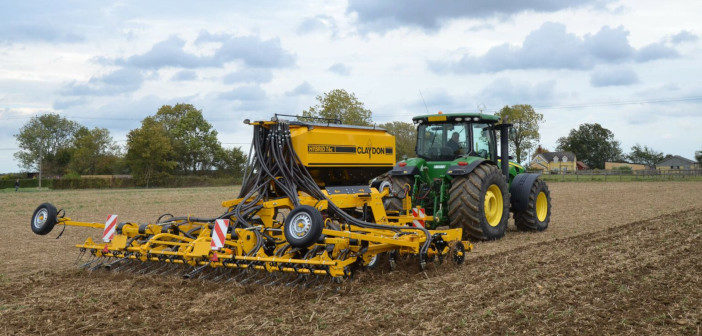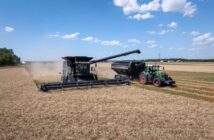Arable farmers are being urged to baseline their carbon emissions now to start the journey towards meeting the industry 2040 net zero targets, with experts estimating that fewer than 50% of producers have calculated their emissions.
Jim Flambert, Head of Sustainability at Map of Ag, says confusion over carbon calculators and variability in results has limited uptake, but recommends those who haven’t yet started calculating their emissions to do so, to better understand where the opportunities lie.
“We will need to achieve our net zero targets or get as close as possible, and the first step on this journey is to calculate an emissions baseline. Without this, we cannot understand the impact of management changes on farm,” he says.
Map of Ag has been proactive in engaging and assisting farmers with this through their agrifood and finance customers. By integrating farm software data into emissions calculators, the company has significantly reduced the farmer burden and time taken to enter data, simplifying it significantly.
However, Mr Flambert notes that farmers’ caution to share data remains a challenge, complicating efforts to provide accurate assessments and support. Map of Ag ensures that data sharing is safe and transparent, with farms remaining in control of how their data is used at all times.
Starting the journey towards carbon reduction can yield immediate benefits. “There are low-hanging fruits that farmers can capitalise on early in the process, making initial steps towards net zero both achievable and beneficial,” says Mr Flambert.
Fertiliser on arable farms, particularly inorganic nitrogen, is one of the biggest contributors to greenhouse gas (GHG) emissions. “This could easily equate to 40-50% of all emissions on arable farms,” Mr Flambert says. “Small steps in reducing this will help.”
He suggests farmers consider actions such as:
- Increasing bulky organic matter applications to the soil using green manures: Crops grown specifically for building and maintaining soil fertility and structure, though they may also have other functions.
- Performing N rate trials: Seeing if rates can be lowered by 10-15% while achieving similar yields
Mr Flambert also advises farmers to aim to have a living root in the ground for as much of the year as possible to aid with carbon sequestration. This can be achieved using cover crops, catch crops, or companion cropping.
“It’s important to view this in the long-term. If you look at it on a 2–3-year basis, you won’t see the trends, but over 5-10 years you will. It’s like investing money in the stock market; you generally need to look at it over time to see the real benefits,” he adds.
While Mr Flambert believes the buzzword of regenerative agriculture (regen ag) has to some degree taken the focus away from emissions targets in recent years, he says its practices, including building natural capital and biodiversity are very much part of the story.
“Regen ag is just a label and isn’t something new, and many farmers are already doing it without needing to re-brand it. Whether one likes or dislikes the label, it is positive for the industry.”
Mr Flambert notes that the experience of regen practices has taught farmers that it takes time to see the benefits.
His biggest piece of advice for farmers is to “try new things, collaborate and learn, and work in small steps. “You don’t need to change your entire farming system overnight, but try things and see if they work, then adopt the ones that do. You need to understand where you are currently by establishing a baseline and then work out how you are going to move forward.”
He believes carbon credits could be useful for farmers once they are universally regulated which may lead to increased uptake. “We are seeing a move away from carbon offsetting to carbon in-setting. This means companies can only take carbon credits from within their supplier or customer base. Outfits like banks are looking at this very closely and aligning themselves with this.
“Generally, farmers are progressive custodians of the countryside and want to make a difference and that is something we can help with,” he adds.




